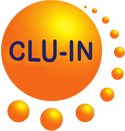Search Result
MERCURY REMOVAL & STABILIZATION IN THE SUBSURFACE USING VAPOR PHASE SULFUR
Jackson, D.G., M.E. Denham, and C. Eddy-Dilek.
Savannah River National Laboratory, 2017 LDRD: Laboratory Directed Research and Development Program, SRNL-STI-2018-00143:29-34(2018)
Filed Under: Research
Filed Under: Research
Operational strategies related to thermal heating of elemental Hg with gas injection were evaluated in simulations performed with the DOE-developed code TOUGH2/TMVOC. The TOUGH2/TMVOC library of thermophysical parameters was updated with relative properties for elemental Hg. Simulations representative of a practical field problem were performed to determine the effect of moisture and air injection requirements to facilitate elemental Hg removal. This research is developing an SRNL technology (US #8,770,891) designed to stabilize elemental Hg in the subsurface. The technology uses residual heat present following thermal treatment to deliver elemental sulfur vapor as a sequestering agent. Sulfur combines with Hg to form mercury sulfide compounds, which are more stable, less leachable forms of Hg. The goal is to establish an operating paradigm that couples thermal mass removal with this process to stabilize residual contamination in place. https://srnl.doe.gov/LDRD/pdf/FY17_SRNL_LDRD_Report.pdf
Savannah River National Laboratory, 2017 LDRD: Laboratory Directed Research and Development Program, SRNL-STI-2018-00143:29-34(2018)
Filed Under: Research
Filed Under: Research
Operational strategies related to thermal heating of elemental Hg with gas injection were evaluated in simulations performed with the DOE-developed code TOUGH2/TMVOC. The TOUGH2/TMVOC library of thermophysical parameters was updated with relative properties for elemental Hg. Simulations representative of a practical field problem were performed to determine the effect of moisture and air injection requirements to facilitate elemental Hg removal. This research is developing an SRNL technology (US #8,770,891) designed to stabilize elemental Hg in the subsurface. The technology uses residual heat present following thermal treatment to deliver elemental sulfur vapor as a sequestering agent. Sulfur combines with Hg to form mercury sulfide compounds, which are more stable, less leachable forms of Hg. The goal is to establish an operating paradigm that couples thermal mass removal with this process to stabilize residual contamination in place. https://srnl.doe.gov/LDRD/pdf/FY17_SRNL_LDRD_Report.pdf
The Technology Innovation News Survey welcomes your comments and
suggestions, as well as information about errors for correction. Please
contact Michael Adam of the U.S. EPA Office of Superfund Remediation
and Technology Innovation at adam.michael@epa.gov or (703) 603-9915
with any comments, suggestions, or corrections.
Mention of non-EPA documents, presentations, or papers does not constitute a U.S. EPA endorsement of their contents, only an acknowledgment that they exist and may be relevant to the Technology Innovation News Survey audience.





